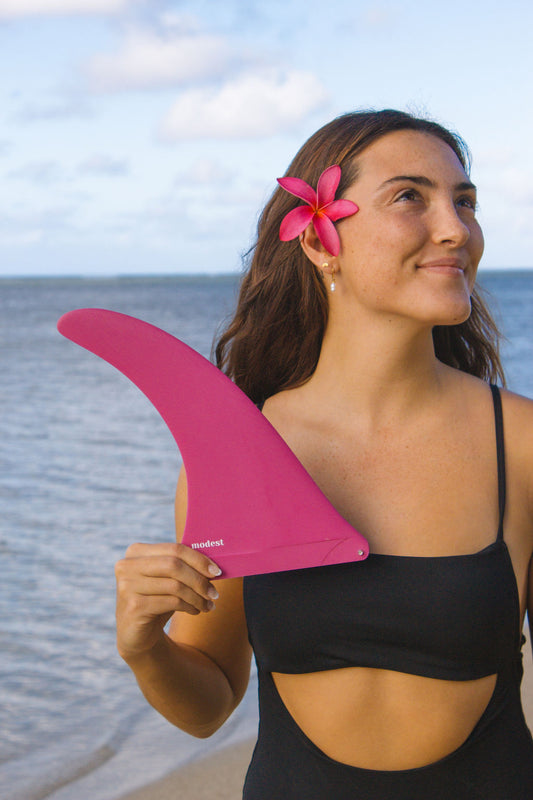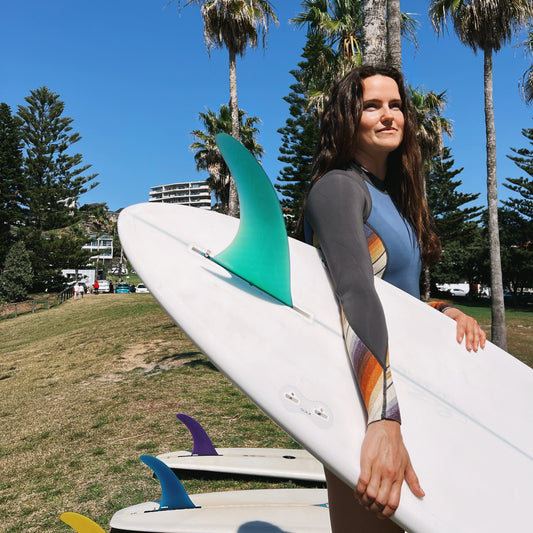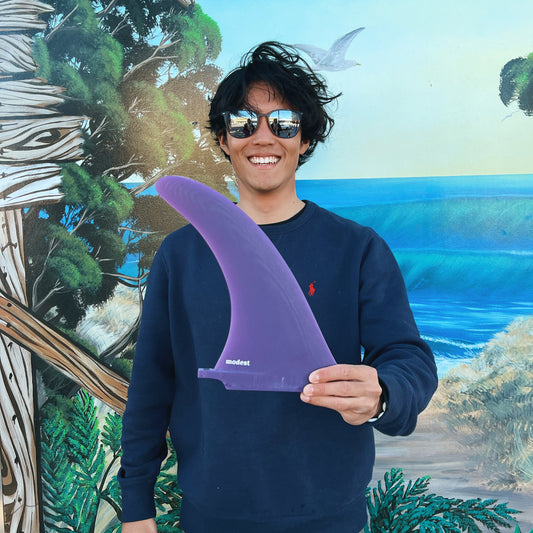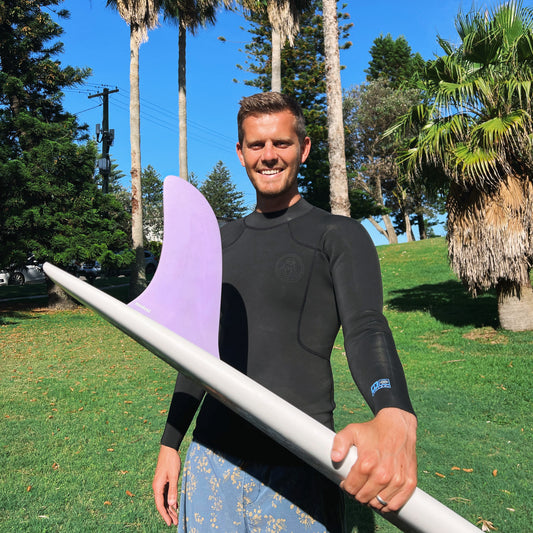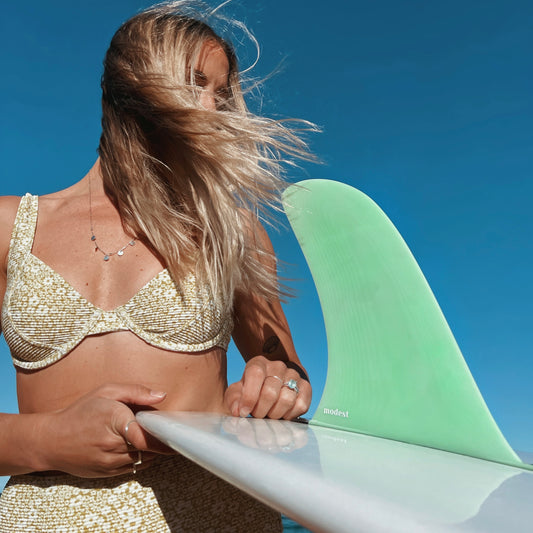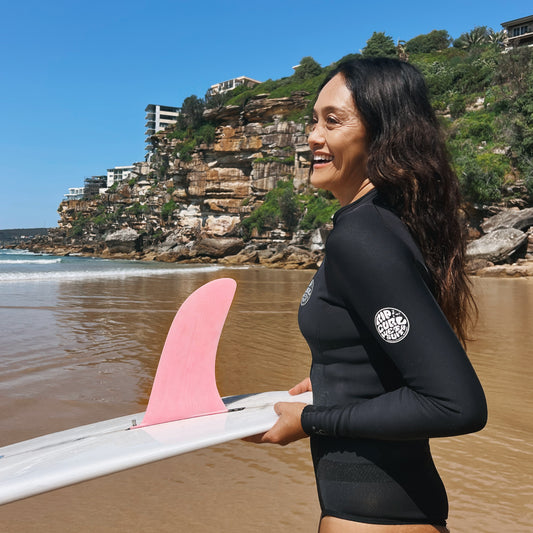A Comprehensive Guide to Longboard Fin Setups
Longboard fins are not merely decorative accessories but integral components that influence your surfing style and maneuverability.
Understanding the intricacies of longboard fins is essential for selecting the right ones to match your preferences and maximize your ride.
In this article, we take a deep dive into the world of longboard fins, unraveling their designs, materials, and the effects they have on your surfing performance.
Fins play a crucial role in the world of longboarding, and understanding their purpose and importance is essential for every surfer.
Here are some key points to consider:
-
Exploring the Role of Fins in Longboarding:
- Fins are the extensions on the bottom of your longboard that provide stability, control, and maneuverability.
- They help you maintain your balance and prevent your board from sliding sideways, especially during turns.
- Fins also help generate lift and provide directional stability, allowing you to maintain control while riding the waves.
-
Understanding How Fins Affect Stability, Control, and Maneuverability:
- The size, shape, and configuration of fins significantly impact your longboard's performance.
- Larger fins tend to provide more stability, making them suitable for cruising and nose riding.
- Smaller fins offer increased maneuverability and responsiveness, making them ideal for high-performance and aggressive turns.
Different Types of Longboard Fins:
Longboard fins come in various designs, each with its unique characteristics and advantages. Let's explore some of the most common types:
-
Single Fins:
- The classic and versatile single fin design is the foundation of longboarding.
- Single fins offer stability and control while providing smooth turns and excellent tracking.
- They are ideal for traditional cruising, trimming, and nose riding, giving a laid-back and stylish surfing experience.
-
Read our explaining longboard templates for more information.
Examples of single fins:

-
Twin Fins:
- Twin fins consist of two smaller fins positioned side by side near the tail of the board.
- They provide a looser and more playful feel, allowing for quick turns and increased maneuverability.
- Twin fins excel in smaller, less powerful waves and offer a unique surfing experience with increased speed and a skate-like feel.
- Twin fins are unusual to see in longboard surfboards as they already provide a significant amount of speed due to their volume.
- However, mid-length boards are often very playful with twin fins and could be used as an alternative to try a new experience.
-
2+1 (Tri Fin) Setup:
- The 2+1 setup is similar to a "thruster" set up you would typically see on shortboards, grovellers or mid-length surfboards.
- The 2+1 setup consists of three fins, with a larger central fin and two smaller side fins.
- The setup offers a balance of stability, control, and maneuverability, making it versatile for various wave conditions and surfing styles.
- However, it is a relatively slower setup compared to a single fin, due to the drag created from the side fins.
- It is generally useful in punchy or large beach breaks where you need the control of your surfboard to navigate challenging sections.
-
Quad Fins:
- Quad fins feature four fins, with two larger fins in the back and two smaller fins in the front.
- This configuration provides exceptional speed, acceleration, and maneuverability.
- Quad fins are ideal for fast and powerful waves, allowing for tight turns and increased responsiveness.
- Quad fins are less likely to be used on longboards, as typically longboards only have 1 or 3 fin boxes by design.
- However, on high-performance longboards, you may find quad fin boxes available and these offer a great amount of speed for you to make sections and do high performance manoeuvres.
-
Other Fin Configurations:
- There are other unique fin setups, such as five fins or asymmetrical fins, that cater to specific riding styles and preferences.
- Five fins offer flexibility and allow you to experiment with different combinations for varied wave conditions.
- Asymmetrical fins provide specific performance characteristics for toe-side and heel-side turns, enhancing maneuverability.
- These are typically reserved for advanced riders who have the ability to test and try alternative fin configurations to explore new sides of their surfing.
Factors Influencing Fin Performance:
Several factors influence how fins perform and impact your surfing experience. Let's take a closer look at them:
-
Fin Size and Area:
- The size and surface area of your fins affect various aspects of performance.
- Larger fins provide more stability, while smaller fins offer increased maneuverability.
- Fin size also influences speed, control, and the ability to make tight turns.
-
Fin Rake and Sweep:
- Fin rake refers to the angle between the fin's leading edge and the perpendicular line to the board's surface.
- More rake enhances maneuverability and quick turns, while less rake provides stability and control.
- Fin sweep, the curvature of the fin from the base to the tip, also affects turning ability and hold in the wave.
-
Fin Materials and Flex:
- The materials used in fin construction, such as fiberglass, carbon fibre, or composite materials, impact performance.
- Stiffer fins offer more stability and control, while more flexible fins can provide increased responsiveness and maneuverability.
- The combination of materials and flex characteristics can be tailored to suit specific riding styles and wave conditions.
Matching Fins to Your Riding Style:
Choosing the right fins for your riding style is crucial for maximizing your longboarding experience. Consider the following:
-
Longboard Fins for Classic Cruising and Nose Riding:
- If you enjoy a relaxed and classic longboarding style, look for larger single fins or specialized nose riding fins.
- These fins provide stability and control for graceful cruising and extended nose rides.
- Our range of everyday fins are perfect for beginners and intermediates looking to expand their longboarding abilities.
-
Selecting Fins for High-Performance and Aggressive Turns:
- If you prefer a more dynamic and aggressive approach, consider a 2+1 setup (with a larger single fin).
- These configurations offer increased maneuverability, responsiveness, and the ability to perform sharp and quick turns.
-
Considering Fins for Different Wave Conditions and Water Types:
- Wave conditions and water types can influence your choice of fins.
- For smaller or less powerful waves, single fins can provide the necessary speed and maneuverability while enabling you to nose ride and practice your cross-stepping.
- In larger or more powerful waves, larger thruster setups or 2+1 setups can enhance stability and control to make sections and big drops.
Experimentation and Customization:
Longboarding is a journey of discovery, and experimenting with different fin setups and customization options can add excitement to your surfing experience. Here are some ideas:
-
Tips for Experimenting with Different Fin Setups and Configurations:
- Don't be afraid to try different fin combinations and configurations to find what works best for you.
- Start by swapping out fins of the same size and gradually explore different sizes and setups to notice the differences in performance.
-
Exploring Customization Options like Adjustable Fins or Modular Systems:
- Adjustable fins allow you to fine-tune your setup by adjusting the position, angle, or even the size of the fins.
- Modular fin systems offer versatility, enabling you to switch between different fin types and setups without the need for tools.
- All of our everyday fins come with a hand-tightening screw so you can adjust the fin placement in the box in the water to experience different feelings.
Remember, finding the perfect fin setup for your longboard is a personal journey, and it's all about finding what feels right for you. Enjoy the process of experimentation, embrace it and and let your fins enhance your longboarding adventures!
Learn more about specific longboard fin templates in our blog post.



